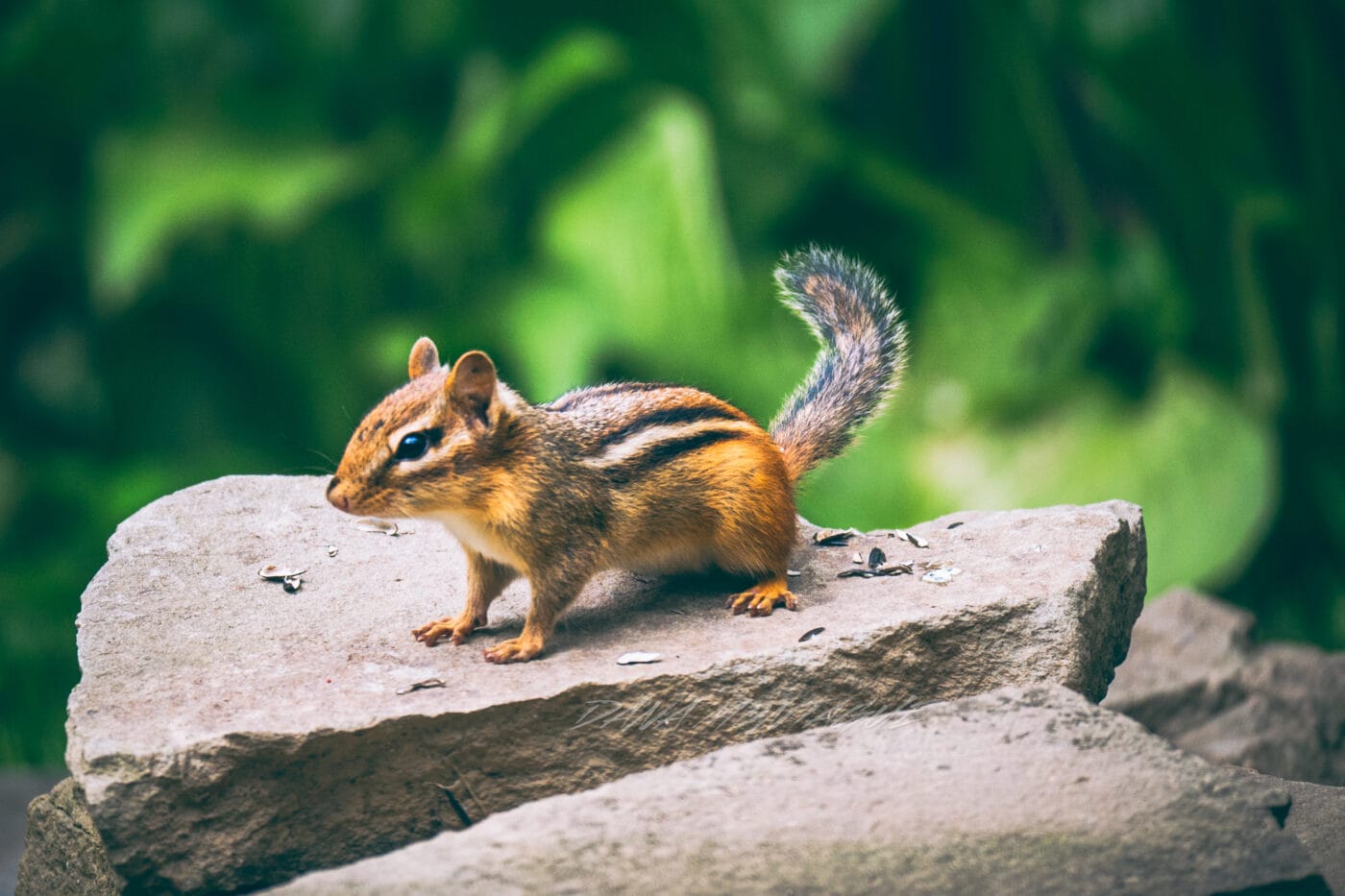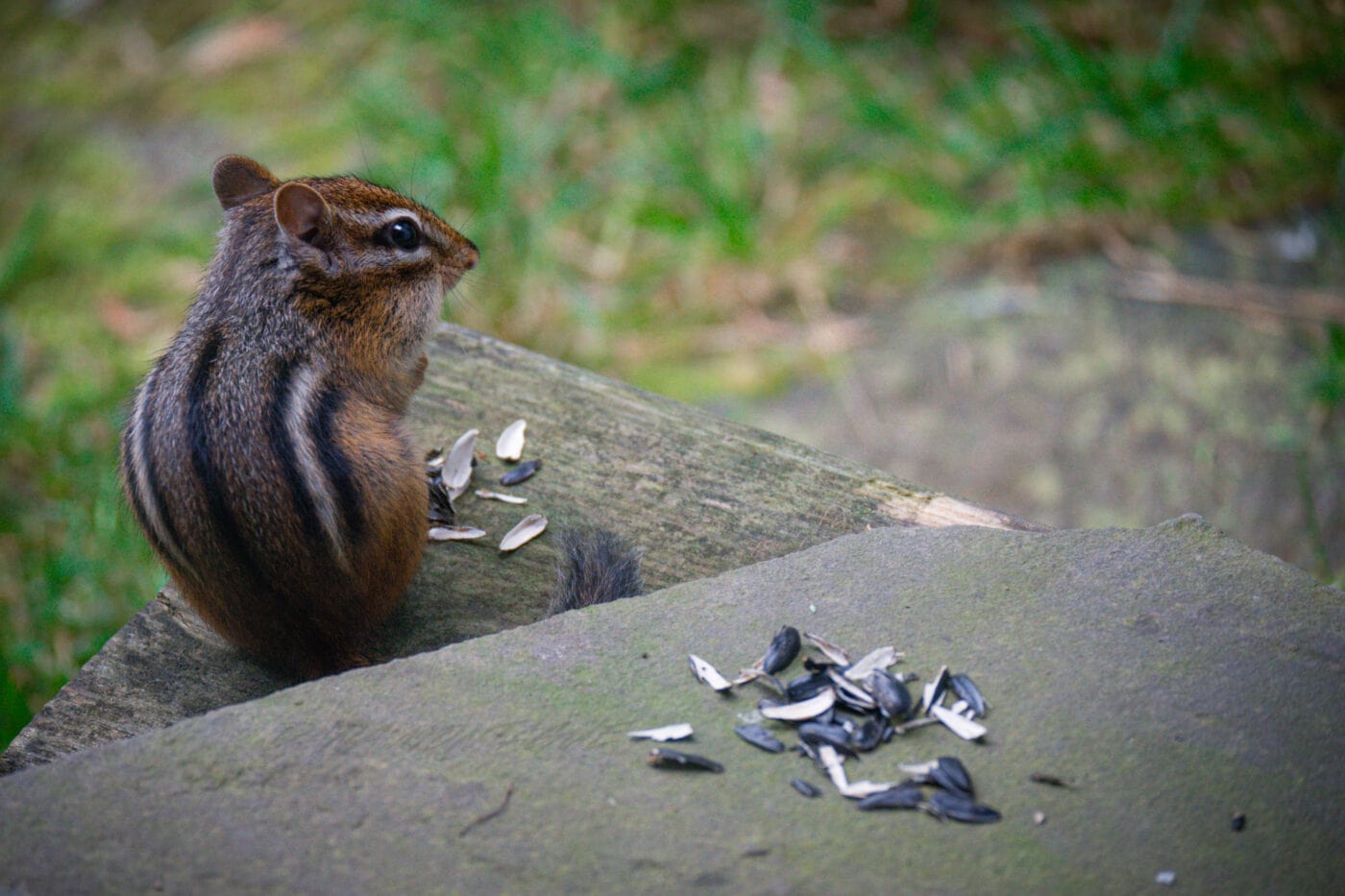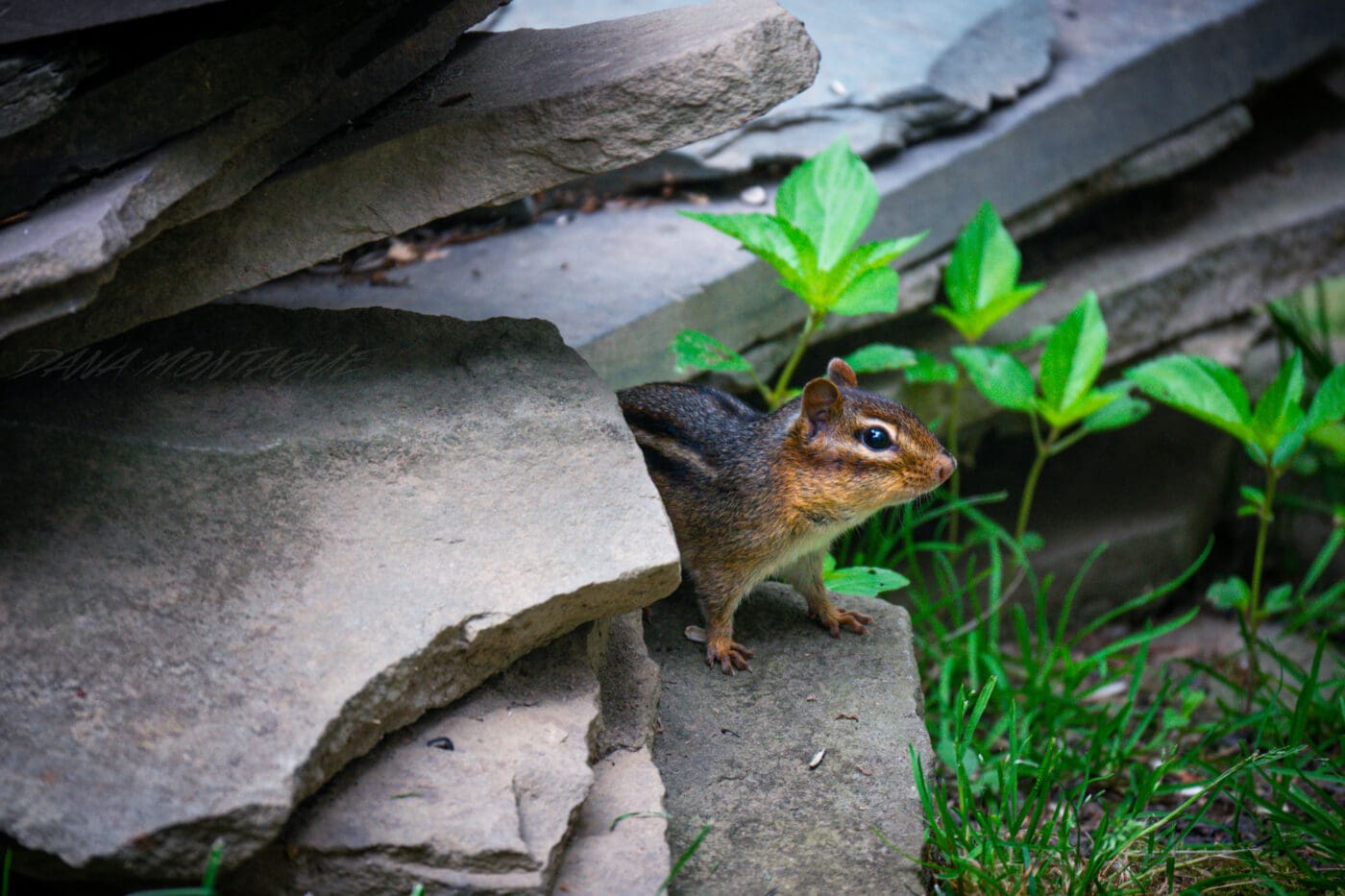Next to gray squirrels, their rodent cousins, Eastern chipmunks are probably the most frequently spotted mammal in parks and backyards throughout the Hudson Valley. But how much do you really know about these cute critters with the chubby cheeks? Take a deep dive into the chipmunks’ underground home and discover some pretty wild facts.

What’s in a name? “Chipmunk” undoubtedly has Indigenous origins, perhaps coming from the Algonquin word jidmoonh (pronounced chit-moon), meaning squirrel. The chipmunk’s Latin name, Tamias striatus, translates as “striped storer,” referring to its tendency to stockpile food.
The story behind those stripes. The black and white lines on a chipmunk’s back offer camouflage from predators. An Indigenous legend provides a colorful account of their origin. According to the story, a chipmunk chided a bear for being too boastful about its strength. Enraged by the criticism, the bear tried to capture the chipmunk, which managed to reach the safety of its burrow — but not before having its back raked by the claw of its outsized foe.

Chipmunk homes are marvels of interior design. Their multi-level abodes contain several chambers — for sleeping, food supplies, even a “bathroom” — all connected by tunnels spanning up to 30 feet. To expand their burrows (often originally the homes of other creatures, such as woodchucks, that have moved on), chipmunks use their front feet to dislodge the soil and cheek pouches to deposit it elsewhere.
They store up to a gallon of seeds and nuts for sustenance during the winter. In times of famine, European colonists and Indigenous peoples sometimes dug up these caches to supplement their diets with the chipmunks’ high-protein fare. The animals’ cheek pouches serve as “shopping bags,” to deliver food to their underground pantry.

Chipmunks don’t hibernate. While they do spend much of the winter sleeping, they wake up every few weeks to grab a meal from their food chamber and go to the bathroom. Occasionally, during midwinter thaws, they’ll even leave their burrows to replenish supplies. The rest of the year, if chipmunks aren’t on the lookout for more food, they’re snoozing — up to 15 hours a day.
They are solitary and polygamous. Female chipmunks mate with numerous partners, but share their burrows with none. Normally, they breed twice a year, in early spring and midsummer, delivering anywhere from two to eight naked, blind, and totally helpless offspring. In six weeks, the young begin venturing outside the burrows and leave Mom for good at eight weeks old.

Chipmunks communicate through a number of calls — “chips” and “chucks” that discourage other chipmunks from entering their territory or alert them to danger from a vast array of predators (including owls and hawks, coyotes and foxes, raccoons, and even squirrels). Interestingly, chipmunks also respond to danger calls from woodchucks, scooting toward their burrows when they hear this animal’s high-pitched alarm whistle.
They have a star on the Hollywood Walk of Fame. Alvin, Simon, and Theodore, the cartoon chipmunks created by Ross Bagdasarian in 1958, are honored at 6600 Hollywood Boulevard. For their singing talents — including “The Chipmunk Song,” which has sold more than five million copies — the rhyming rodents have won five Grammy Awards and had three certified platinum albums.

Chipmunks help sustain a healthy ecosystem. By hoarding seeds and berries, chipmunks support new growth of trees and shrubs. They also eat fungi, and help to scatter spores of some species that have lost the ability to disperse their spores through the air.
And they’re helping biologists understand the impacts of climate change. A study by a Fordham University biologist revealed that during warmer winters — when chipmunks remain active — they have a much lower survival rate than during traditionally cold seasons, when they spend most of their time sleeping and out of reach of predators. This data could have important implications in understanding how climate change will affect all mammals that depend on a long winter’s rest.
Reed Sparling is a staff writer and historian at Scenic Hudson. He is the former editor of Hudson Valley Magazine, and currently co-edits the Hudson River Valley Review, a scholarly journal published by the Hudson River Valley Institute at Marist College.